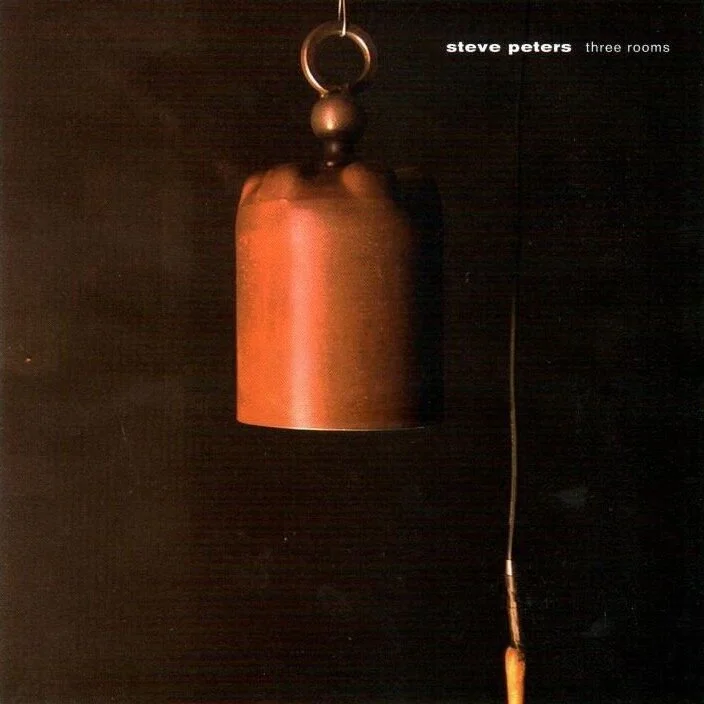Oct. 15, 2020
I’m pleasantly surprised to learn that the SIRR label in Lisbon has re-issued my album Three Rooms as a digital download. I was equally surprised when they originally released it on CD in 2007 (I still have a few copies if anyone is interested). This album documents three sound installations from a time when that was mostly what I was doing, with the hope of doing more. Each of the three pieces on this release has a back story that might be interesting to know.
The first piece, Delicate Abrasions, was made in 2003 as a 12-channel sound installation for the Shack Obscura, a raw and dusty warehouse space behind the now-deceased Klaudia Marr Gallery in Santa Fe that served as a project space for immersive installations that were essentially unmarketable. It was the first site-specific piece of mine that drew all of its sonic material from the exhibition space itself.
One of the first things I noticed in the space were hundreds of roofing nails sticking through the boards in the ceiling. I set myself the obsessive task of plucking every one of them with a guitar pick, recorded with a contact mic. That resulted in a collection of plinks, plunks, and thuds that serve as a continuous percussive background to the piece. The other sounds were all derived from me playing the wooden posts and beams, the corrugated metal on the walls, the concrete floors, the large rolling door, some rusty steel mesh, and the windows. The eerie melodic content is the sound of scraping bits of broken glass on the glass window panes, slowed down many times. The nails were heard in eight small speakers hidden all around the space, and the rest was played in a four-channel mix in the center of the room.
Delicate Abrasions was first released as a 3” mini-CDr packaged in a piece of rusted steel, in a limited edition of 100 copies. The piece is dedicated to my good friend Steve Roden; many times when I was stuck while working on it I would ask myself, “What would Roden do?” I also found words of encouragement and inspiration in Leonard Koren’s wonderful book, Wabi-Sabi.
The second piece, Center of Gravity, came from an installation in 2004 at the School of the Art Institute of Chicago with visual artist Susan York. She made one of her graphite rooms, a meditative space with a small viewing pier. The sound component consisted of my own breath treated with electronic processing. Inspired by my friends Annea Lockwood and Ruth Anderson, I approached each individual breath as a unique composition separated by long silences. There was nearly six hours of this material, played on random shuffle. For the CD version I had to edit it down to 20 minutes, and many of the pieces overlap.
However, the real beginning of this piece was in a live performance I did in 2002. There was a weekend festival of “lower case” sound in Albuquerque with myself, Steve Roden, Jeph Jerman, and Bernhard Günter, who was visiting from Germany. I was quite nervous about performing, and in fact this would be my final live performance for many years. As I was frantically trying to figure out what I should do for the gig and getting nowhere with it, I kept telling myself, "just breathe…just breathe…” At some point it became clear I should do exactly that. And so my “farewell” performance consisted of simply breathing into a microphone run through some electronic gear for about 20 minutes.
The final piece, Mountains Hidden in Mountains, came out of my brief involvement with Zen Buddhism. I’ve never been at all religious, but I got interested in Buddhism around 2000. Having gone through some major personal upheaval, my friend Doranne Crable gave me a book by the Buddhist teacher Pema Chödrön. I found it to be interesting and helpful. Buddhism had long been on my radar due to the many artists and composers I knew and admired who practiced or were influenced by it. And the aesthetics of Zen certainly appealed to me. So this book got me more interested in it.
It just so happened that there was a Soto Zen center a few blocks from where I was living, and I began to practice there. I was not especially enamored with the devotional rituals, though I gave it a sincere effort. However, I loved the sounds, especially the big bell that was rung to signal the beginning and end of meditation sessions. As a way to enter into meditation, I would listen to the sound of the bell as it decayed into silence. Often I was never quite sure if it had completely stopped ringing or not, and that uncertainly became the very simple idea behind this piece.
There is a long, sad, and all too typical story about the demise of that particular Zen community that I won’t go into here. I’ll just say that it confirmed my suspicions regarding organized, hierarchical spirituality. Since then I’ve continued to meditate and study and try to live according to the Buddha dharma, happily unaffiliated with any particular group or teacher. I still find much wisdom in the teaching, but prefer to remain an independent practitioner.
In 2004 I turned this piece into a sound installation in a faux bell tower at the Santa Fe Art Institute. When the bell was rung by a visitor, a sensor in the beater triggered a CD recording of the piece that faded in imperceptibly as the acoustic sound of the bell gradually decayed.

